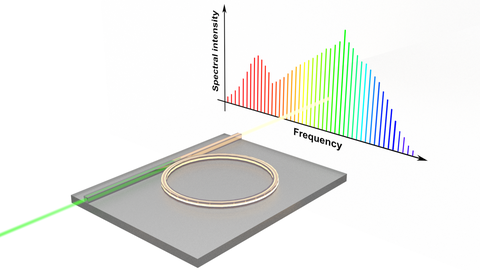

Popular Mechanics
source link: https://www.popularmechanics.co.za/tech/new-chip-based-laser-sets-internet-speed-record/
Go to the source link to view the article. You can view the picture content, updated content and better typesetting reading experience. If the link is broken, please click the button below to view the snapshot at that time.
New Chip-Based Laser Sets Internet Speed Record

Using a chip-based optical frequency comb, researchers transmitted almost double the global internet traffic in a single second.
In new research, scientists have blown the roof off conventional telecommunications with a chip that can send nearly twice the amount of traffic as the entire internet in a single second—setting the speed record for data transmission. The researchers say that just one light source and one optical chip can work together to produce a “frequency comb” capable of eye-watering data transmission speeds. How can the same tiny collection of raw materials, namely silicon—what we already have in our home computers and infrastructure—produce such higher speeds?
The new chip was made by researchers from the University of Copenhagen, Technical University of Denmark (DTU), Chalmers University of Technology in Sweden, and Japan’s Fujikura Ltd. company. Their paper appears in Nature Photonics.
“We experimentally demonstrate transmission of 1.84 Pbit s–1over a 37-core, 7.9-km-long fibre using 223 wavelength channels derived from a single microcomb ring resonator producing a stabilized dark-pulse Kerr frequency comb,” the authors write.
Okay, there’s a lot to unpack here. The headline-grabbing statistic here, though, is the speed: 1.84 petabits, or, as New Atlas explains, “almost twice the global internet traffic per second.” One- to 10-gigabit home internet connections are the cutting edge in consumer tech for now, and one petabit is a million gigabits. The paper’s authors say fiber optics— glass-based cabling that carries the largest bandwidths of internet traffic—is key to global communication leading into the future, but our current technology will eventually hit its limit.
Remember the earliest telecommunications, like Morse code delivered over telegraph lines? Everything that has followed has the same basic foundational mechanic: on and off, 0 and 1, space and not-space. The “optic” part of fiber optic is that it’s the carrier for extremely rapid flashes of light. And a frequency comb, one of the most advanced ways to send the tiniest and most predictable flashes of light, is a natural best in class.
What’s a frequency comb? The U.S. government’s National Institute of Standards and Technology (NIST) explained as part of a recent study of its own that appears in the journal Nature: “[A] frequency comb is a type of laser whose light consists of many well-defined frequencies that can be measured accurately. Looking at the laser’s spectrum on a display, each frequency would stand out like one tooth of a comb, giving the technology its name.”
Frequency combs are commonly used to measure time and distance with precision, and applications range from atomic clocks to telescopes.
But the University of Copenhagen-led team is harnessing that very light in a new way, to carry an astonishing amount of data. The optical chip creates a frequency comb, splitting the laser into the full spectrum of light and producing “hundreds” of distinct frequencies, or colors, according to a DTU press release. The researchers can then encode data onto each of those separate wavelengths of color.
One chip could replace 1,000 lasers currently used in fiber optics, making the entire system more energy efficient.

Dodd-Walls Centre for Photonic and Quantum Technologies , CC BY-SA 2.0, via Wikimedia Commons
Computer network infrastructure branches into smaller and smaller structures, which comes with adisadvantage: every downshift in “pipe size” comes with a transfer point and different hardware. All that is to say, any big progress in one specific part of computer technology must be taken with a similarly big grain of salt. You can’t just drop a world-record computer chip into our existing system. If you’ve ever tried to save an aging computer by installing new RAM or a new graphics card, for example, you may have learned a hard lesson about the holistic nature of computers.
The researchers also set this new data transmission speed record using “specialized cables,” meaning their technology is far from being infrastructure ready—this is scholarly research, not a consumer trade show. But the National Institute of Information and Communications Technology recently broke the internet speed record for standard cables, which means that tech would be easily compatible with existing infrastructure, unlike the frequency comb chip.
But this record could still change the landscape of telecommunications down the road. And the Copenhagen-based research team says they’re not even stopping at 1.84 petabits per second. With the right setup, they believe they can set up a single chip that can transmit 100 petabits per second. That’s 100 times today’s global internet traffic per second. Get ready, because your nonstop Zoom meetings are about to run a lot smoother.
Recommend
About Joyk
Aggregate valuable and interesting links.
Joyk means Joy of geeK